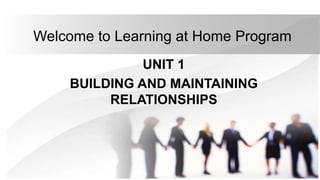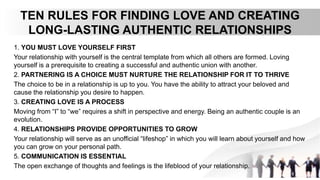This document discusses building and maintaining relationships. It covers three types of personal relationships: family, friends, and partnerships. Family provides support and a sense of community. Friends offer companionship and support during difficult times. Partnerships, like marriage, are built on intimacy, trust and romantic love. Healthy relationships are important for well-being, as they can help people live longer, cope with stress better, and feel happier. The document also discusses rights and responsibilities in relationships, as well as common relationship challenges.


































